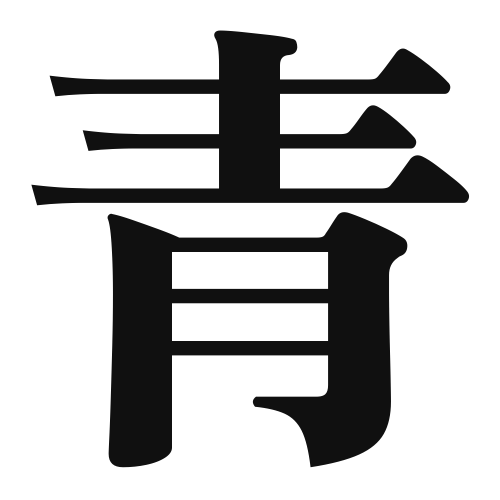1. Overview of Meaning
The kanji “青” (pronounced “ao”) primarily means “blue” or “green.” It is often used to describe colors in nature, such as the sky or plants, and can also refer to youthfulness or freshness.
2. Formation and Radicals
The kanji “青” is classified as a pictogram, representing the color blue or green. It visually resembles the color itself. The radical for “青” is also “青,” which is used in other kanji related to colors and nature.
3. Examples of Usage
Common words and phrases that include “青” are:
- 青空 (aozora) – blue sky
- 青い (aoi) – blue/green (adjective)
- 青春 (seishun) – youth
Example sentences in daily conversation:
- 今日は青い空ですね。 (Today is a blue sky.)
- 彼は青春を楽しんでいます。 (He is enjoying his youth.)
4. Synonyms and Antonyms
Similar kanji with related meanings include:
- 緑 (midori) – green (specifically refers to the color green)
Antonyms include:
- 赤 (aka) – red (opposite in color)
5. Cultural and Historical Background
The kanji “青” has significant ties to Japanese culture, often symbolizing nature and tranquility. It appears in various proverbs and idioms, such as:
- 青は藍より出でて藍より青し (Ao wa ai yori idete ai yori aoshi) – “Blue comes from indigo but is bluer than indigo,” meaning that a student can surpass their teacher.
This reflects the appreciation of nature and the concept of growth in Japanese culture.
